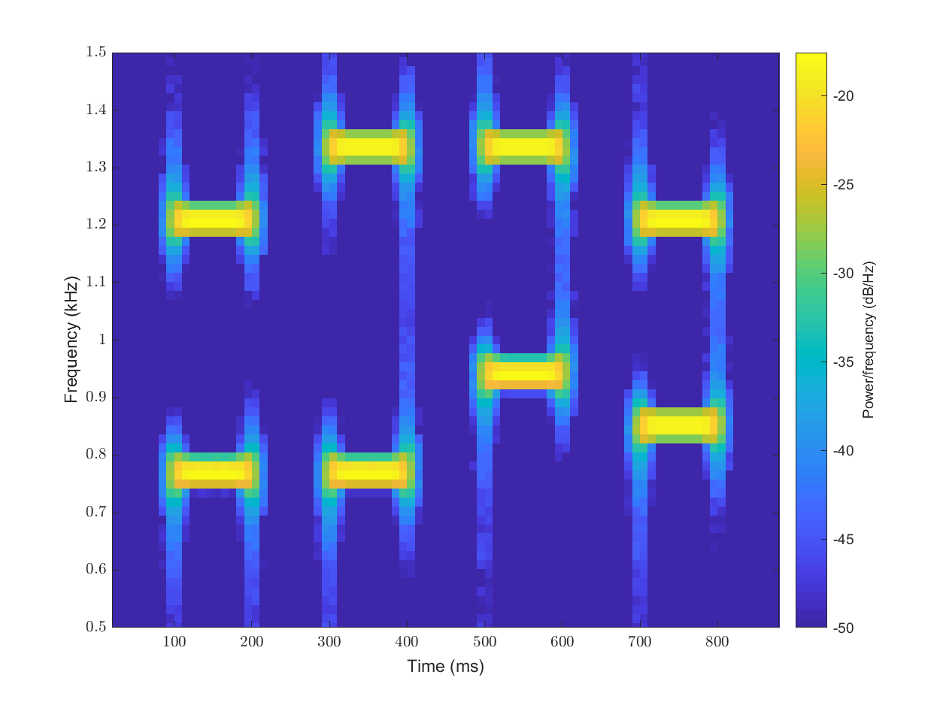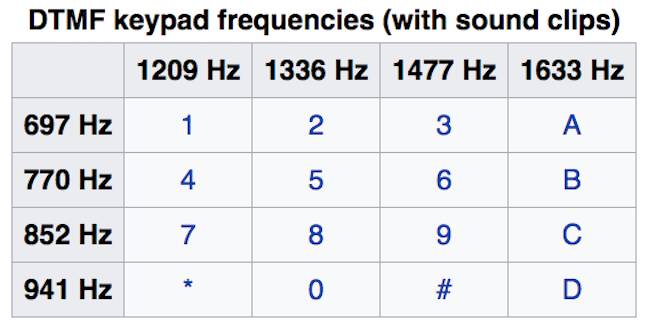To work out the pin code dialed using the frequency diagram, you first need to understand Dual Tone Multi Frequency (DTMF) as depicted below.

DTMF (Dual Tone Multiple Frequency) is used to send to signals for button presses on telephones. The data is typically sent over voice channels and so in order to distinguish from human voice, when you hit a button the phone generates two tones of different frequencies - one lower frequency and one high frequency.
Each input on a keypad has a different tone to be recognised. Each input has two tones, hence the ‘Dual Tone’, where these are portrayed as a column and a row in the diagram below. On the frequency diagram above, two yellow lines represent the power of the signal and you can see that there are two parallel lines within each time period, these represent one number dialed on the keypad.
The frequencies of the tones are written below.

By looking through the value of the frequency for each yellow bar in the frequency diagram and comparing it with the corresponding DTMF frequency level in the table, you should be able to work out the four numbers by the value of frequency.
For example, the top left yellow bar in the diagram has a frequency of around 1.2kHz (1200Hz), comparing that with the table, we can see that the number dialed must have been in row one with a frequency of 1209Hz. Then, if we look at the parallel yellow bar below the one we just worked out, we can see that the frequency is slightly lower than 0.8kHz (800Hz), it must be in the row of 770Hz in the chart. Combining these two values, we arrive at the digit 4. If we repeat this process for the other three key presses, we reach the final answer.
The answer was FOUR_FIVE_ZERO_SEVEN.
